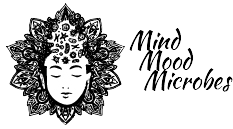4 ways to get parasites and other unwanted microbes off your produce
Pesticides and residue aren’t the only reasons to wash your fruit and vegetables. Studies show that up to 60% of produce contains parasites. Let’s have a look at what the research says.
First of all, I can tell you that I as I combed for research on this subject it was clear that monitoring of parasite levels and general research on this subject is more common in countries outside of North America. So, take these numbers with a grain of salt.
In Canada the most frequent type of food borne outbreak is salmonella followed by E-coli, Shigella, Cyclospora, Giardia and Cryptosporidium. The most common vehicle for outbreak in Canada included leafy greens, pre packaged salads, herbs and sprouts. Parasites are predicted to be present on up to 5.9% of produce.
Worldwide the most common outbreaks include Giardia, Cryptosporidium, Ascaris, Entamoeba, Toxoplasma, Vibrio, Campylobacter, Hymenolepis nana, Toxocara, Hymenolepis diminuta, Cystoisospora, Strongyloides, Hoo worm, Balantidium coli, Enterobius vermicularis, Trichuris trichiura. Parasites are reported to be present on anywhere from 1% to 35.5% of specific food items. The most commonly contaminated foods worldwide include bean sprouts, lettuce, strawberries, green bell peppers, avocado, carrots and tomatoes.
As for studies comparing parasite presence on organic vs conventional farms there was no difference in presence and intensity of presence.
Now for what you can do to reduce your exposure to microbial outbreaks on produce. A few studies compared different methods of reducing microbial contamination including the methods: water rinse, vinegar, 800ppm hydrogen peroxide, 200ppm chlorine and ethanol.
It’s not particularly reasonable to work with chlorine as a vegetable wash, for a few reasons, but vinegar, hydrogen peroxide, essential oil mixes are all easy to use.
Keep in mind that as the bugs come off of your produce you won’t be able to see all of them. Most parasites and bacteria are microscopic.
4 Ways to Get Parasites and Other Unwanted Microbes Off Of Your Produce
Tap water rinse only - This method can remove up to 80% of parasites but doesn’t seem to be the most effective method for all parasites. Cyclospora for example, is resistant to tap water.
Vinegar wash - Using one part vinegar with three parts cold tap water and soaking for 1 minute removes close to 99% of parasites in studies. Even better was to let the produce soak for 5-10 minutes. **Do not combine vinegar with hydrogen peroxide.
Essential Oils - Essential oils such as oregano, thyme, clove, rosemary, cinnamon lemongrass and mustard have been found effective. However, they work better when they are water soluble. If making your own vegetable wash you would need a product such as Solubol or alcohol such as Everclear to make the essential oils mix with water. Read more here: https://homelyville.com/how-to-dilute-essential-oils/ You can also consider a product such as this:
Hydrogen peroxide - If using hydrogen peroxide I don’t recommend working with more than a 3% strength solution. If you have food grade hydrogen peroxide I recommend diluting it to 1-3% (using gloves) and allowing your vegetables to soak for 5-10 minutes.
Easy Homemade Vegetable Wash Recipe
Ingredients
1.5 cups filtered or distilled water
3/4 cup apple cider vinegar
1 tbsp baking soda
10 drops lemongrass essential oil
Instructions
Combine all ingredients in glass spray bottle. It make get a bit foamy.
Cap bottle and shake gently to mix well.
Spray as needed on produce and let sit for a few minutes.
Rinse well under cold water, let dry and store produce as desired.
Store your spray in the fridge to keep for 1 month.
References
Azim A, Ahmed S, Paul SK, et al. Prevalence of Intestinal Parasites in Raw Vegetables Consumed by Inhabitants of Mymensingh City. Mymensingh Medical Journal : MMJ. 2018 Jul;27(3):440-444. PMID: 30141429.
Bekele F, Shumbej T. Fruit and vegetable contamination with medically important helminths and protozoans in Tarcha town, Dawuro zone, South West Ethiopia. Res Rep Trop Med. 2019 Apr 30;10:19-23. doi: 10.2147/RRTM.S205250. PMID: 31118867; PMCID: PMC6503341.
L. J. ROBERTSON; B. GJERDE (2000) Isolation and Enumeration of Giardia Cysts, Cryptosporidium Oocysts, and Ascaris Eggs from Fruits and Vegetables. J Food Prot (2000) 63 (6): 775–778.
https://doi.org/10.4315/0362-028X-63.6.775
Temesgen TT, Robertson LJ, Stigum VM, Tysnes KR. Removal of Parasite Transmission Stages from Berries Using Washing Procedures Suitable for Consumers. Foods. 2021 Feb 23;10(2):481. doi: 10.3390/foods10020481. PMID: 33672362; PMCID: PMC7926854.
Casillas SM, Bennett C, Straily A. Notes from the Field: Multiple Cyclosporiasis Outbreaks - United States, 2018. MMWR Morb Mortal Wkly Rep. 2018 Oct 5;67(39):1101-1102. doi: 10.15585/mmwr.mm6739a6. PMID: 30286055; PMCID: PMC6171894.
G. K. KOZAK; D. MacDONALD; L. LANDRY; J. M. FARBER (2013) Foodborne Outbreaks in Canada Linked to Produce: 2001 through 2009 76 (1): 173–183. J Food Prot
https://doi.org/10.4315/0362-028X.JFP-12-126
I.A. Kyriánová, O. Kopecký, S. Šlosárková, J. Vadlejch,
Comparison of internal parasitic fauna in dairy goats at conventional and organic farms in the Czech Republic, Small Ruminant Research, Volume 175, 2019, Pages 126-132
Juan Yun, Changqing Wu, Xihong Li, and Xuetong Fan*Improving the Microbial Food Safety of Fresh Fruits and Vegetables with Aqueous and Vaporous Essential Oils
DOI: 10.1021/bk-2018-1287.ch005
